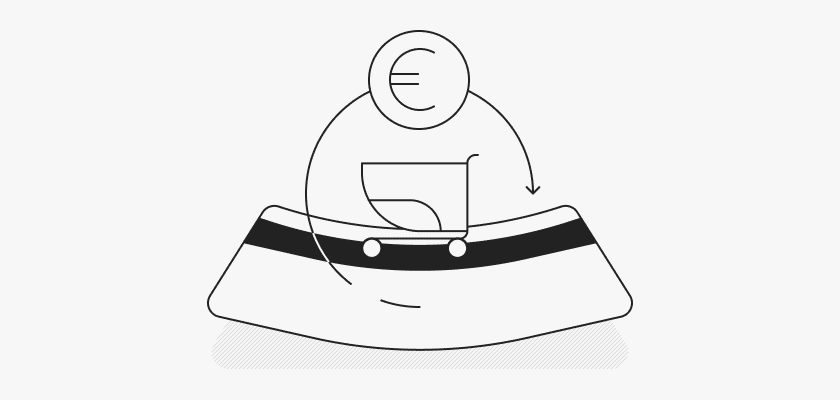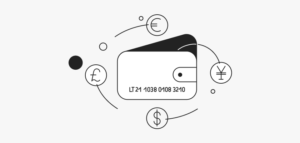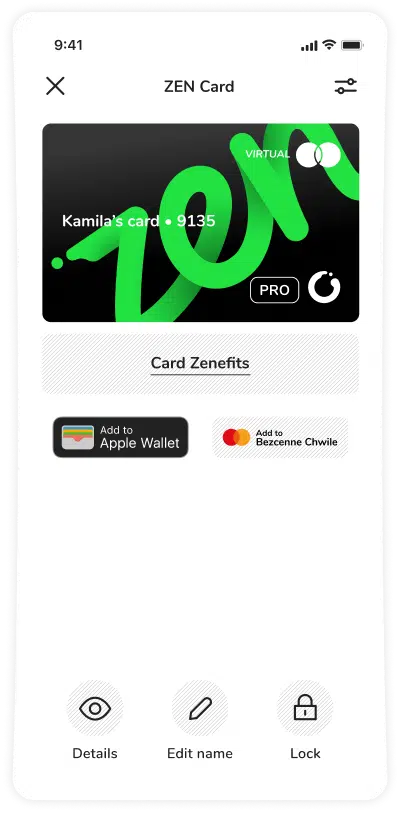Dissatisfied customers have two options when it comes to getting their money back after a purchase: requesting a refund or initiating a chargeback through their issuing bank. While neither of these options are ideal for a business, chargebacks can be far more costly in terms of money, time, and resources.
Every two years the number of chargebacks increases by 41% and the issue is expected to only grow along with the expanding e-commerce market. If you’re not entirely sure what the difference is between chargebacks and refunds – it’s worth finding out.
In this guide, we look at chargebacks and refunds, including:
- What is a chargeback & what is a refund
- The difference between chargebacks and refunds
- Which is better for businesses
- Why you may have received a chargeback request instead of a refund
- The costs involved with chargebacks vs refunds
- How to encourage customers to request a refund instead of a chargeback.
What is a chargeback?
A chargeback is a payment reversal that happens when a customer disputes a transaction. This might happen for several reasons, including if:
- A customer doesn’t recognize a payment on their bank statement
- Goods or services weren’t delivered, or
- Products received were defective or not as described.
Customers can only request a chargeback when they’ve used a credit or debit card to make a payment. The card-issuing bank or credit card company then investigates the dispute. If the customer’s claims are deemed legitimate, the issuing bank will remove the funds from your merchant account and return them to the customer. If a merchant thinks the chargeback request is ingenuine, they can dispute a chargeback request and provide evidence to challenge the case.
What is a refund?
A refund is when a business repays money to a customer who is dissatisfied with the product or service provided. Unlike chargebacks, refunds are handled directly between the merchant and customer with no interference from the issuing bank. To request a refund, customers contact the merchant or service provider directly and refunds are carried out according to the merchant’s returns policy.
When a merchant approves a refund, they credit money back into the customer’s original payment method. Alternatively, the merchant can reach an agreement with the customer (i.e. offering store credit or a similar item).
Merchants can also refuse a refund if they believe the product being returned is damaged or if the returns time limit has been exceeded. This information should be clearly outlined in their returns policy to minimize disputes with customers.
What’s the difference between a chargeback and a refund?
The terms chargeback and refund are sometimes used interchangeably, but they are two different processes. Both chargebacks and refunds involve returning funds to a dissatisfied customer, however the main difference is whether the merchant returns the money voluntarily (refund) or if the issuing bank gets involved (chargeback).
Let’s look at the other differences between chargeback and refund.
| CHARGEBACK | REFUND | |
| CONTACT | The cardholder contacts the issuing bank, who begins a formal dispute case. | The cardholder contacts the business directly and the refund is processed according to their returns policy. |
| TIME PERIOD | The chargeback process can be time-consuming, especially if the merchant challenges the dispute. | Refunds are usually handled quickly. |
| COST TO MERCHANT | Chargebacks often incur fees, which can add up to affect a business’s bottom line. On top of that, merchants can incur penalties if their chargeback ratio is above a certain threshold. | Merchants may have to pay a minimal transaction fee, depending on payment processors. |
| REPUTATION | Because chargebacks can be associated with fraud, they are more likely to affect a merchant’s reputation. Chargebacks are monitored, and if a merchant has high chargeback ratios, they may be penalized. | Refunds come with a lower reputational risk, especially because they are resolved between the customer and merchant. |
| EXPERTISE | Chargeback processes can be complicated, requiring knowledge of regulations, processes, strategies, penalties, and more. | No skills or expertise is needed to issue a refund, which is a simple process. |
Are chargebacks or refunds better for merchants?
While both chargebacks and refunds arise from dissatisfied customers, which is far from ideal, refunds are generally better for merchants. There are a few reasons for this:
- Less costly: Chargebacks usually involve additional fees imposed by card networks, while refunds typically don’t carry a fee. On top of that, customers often keep their goods after a chargeback, leaving merchants out of pocket.
- Less time-consuming: Chargebacks can cost businesses time and effort in responding to a disputed transaction and gathering evidence to challenge a chargeback, while refunds are processed quickly.
- More control: Merchants have more control over the refund process and can directly communicate with the customer to resolve the issue. Chargebacks, on the other hand, are managed by banks, giving merchants less influence over the outcome.
- Improved customer relationships: Offering refunds can improve customer satisfaction and loyalty by showing that the business is committed to resolving issues. Some research even shows that satisfying customers who are unhappy can increase loyalty more than if they’d never experienced an issue to begin with.
- Preserve reputation: Whether you successfully dispute them or not, chargebacks can affect a merchant’s standing with credit card networks. If you have a high ratio of chargebacks you’ll be considered a high-risk merchant and may be penalized. Refunds, on the other hand, don’t carry such a risk to your reputation.
Why did I get a chargeback instead of a refund?
If you’re wondering why a customer initiated a chargeback instead of a refund, there could be several explanations. According to Midigator’s Consumer Confessional Report, the five main reasons why customers don’t contact merchants before making a dispute are:
- Not recognizing the transaction on their statement, therefore not knowing who to contact
- Not finding a contact phone number or email address for the business
- Fear that a confrontation may lead to an argument and wanting to avoid the ‘drama’
- Not having enough time
- After making contact, the wait time was too long so they gave up.
Other reasons why a customer might initiate a chargeback instead of a refund are:
- They’re not aware that they can request a refund directly from the merchant, so they contact their bank instead
- They’ve attempted to contact the merchant but received an unsatisfactory response or no response
- They think it’s easier to initiate a chargeback with a third party rather than dealing directly with the merchant
- They believe the transaction was fraudulent or unauthorized
- The merchant’s refund policy is unclear, so they request a chargeback instead.
What is chargeback fraud?
While most chargebacks are made in good faith, sometimes a customer will request a chargeback claiming they haven’t received a product or don’t recognize a transaction. They then keep the product or benefit from the service without having to pay for it. This is also known as ‘friendly fraud’, although it’s far from friendly for merchants.
What are double refund chargebacks?
Double refund chargebacks, or double refunds, are when a customer requests a refund from a business while also initiating a chargeback through their bank for the same transaction. This results in the customer receiving the refunded amount twice, once through the merchant and once through the chargeback process initiated by the bank. This means that the merchant incurs the cost of the refund, the chargeback, and associated chargeback fees.
Sometimes, double refund chargebacks are deliberately initiated as part of friendly fraud. Fraudsters receive both repayments while also getting to keep the original product. However, in most cases, double chargebacks happen when a customer is unclear on the processes involved. To prevent double refund chargebacks, merchants should respond to refunds quickly, have clear language around their refund policy, and inform customers of the expected timeframe for funds to appear in their account.
Cost of chargebacks vs refunds
To a customer, receiving a chargeback vs a refund might seem the same. However, for businesses, the costs of chargebacks are higher than the costs of refunds.
Chargeback costs for a business include:
- A chargeback fee, which can range from $20 to $100 depending on your agreement with the acquirer
- The cost of the original transaction
- Administrative costs that come from managing the dispute process, responding to chargeback notifications, and gathering evidence
- Potential penalties for merchants facing excessive chargebacks, such as increased transaction fees.
Refund costs for a business include:
- Transaction fees, depending on the payment processor. These are minimal compared to chargeback fees
- The cost of the original transaction
- Minimal administrative costs since most refunds are handled promptly.
Generally, refunds are more cost-effective and easier to manage compared to chargebacks. Being proactive in offering and processing refunds can help you reduce the financial and administrative burden of chargeback management.
How to encourage customers to request refunds instead of chargebacks
It’s clear that refunds are more beneficial for merchants and can also increase customer satisfaction – that’s a win-win. So how can you encourage your customers to request refunds instead of chargebacks? Here are some ideas.
Have a clear & visible refund policy
Make your refund policy easily accessible from your website, on the checkout page, and in order confirmation emails to ensure customers are aware of how refunds work. Make sure your policy is easy to understand and explains the process of requesting a refund to make it simple for customers. If your policies are complicated, consider providing an FAQ section that can make things clearer.
Be proactive with order updates
If you foresee an order delay or any potential issues with an order, let the customer know immediately and offer them solutions (including refunds if necessary). This keeps them aware of their order status and can prevent them from initiating a chargeback due to delays.
Prioritize customer service
Make it easy for customers to contact you through phone, email, chatbot, or social media, and be sure to respond to inquiries quickly to avoid frustration. Train your staff to respond to refund requests quickly and handle customer complaints efficiently before they escalate into chargebacks. Customers are more likely to reach out to your business if it seems simple and easy to do so.
Use clear billing descriptors
Some customers will dispute a transaction when they don’t recognize it on their statement or don’t know who to contact. Be sure to use clear billing descriptors that include your business name so customers can easily recognize a purchase. This is especially important if your business’s registered and trading names are different.
Keep your customers & avoid chargeback costs
No matter how easy you’ve made it for customers to request a refund, sometimes you just can’t avoid a chargeback. It’s the bane of online store owners – but it doesn’t have to be that way. What if there was a solution that made chargebacks disappear from your life completely, including all the fees involved? The good news is, there is.
ZEN payment gateway removes the pain of chargebacks from your life by covering all additional costs, managing communication with the customer, and assuming the risk of any disputes. This saves you money, time, and effort, and keeps your customers happy by ensuring they get their money back quickly. All included in the price of a monthly ZEN payments subscription, so you can focus on growing your online store instead of challenging disputes.




